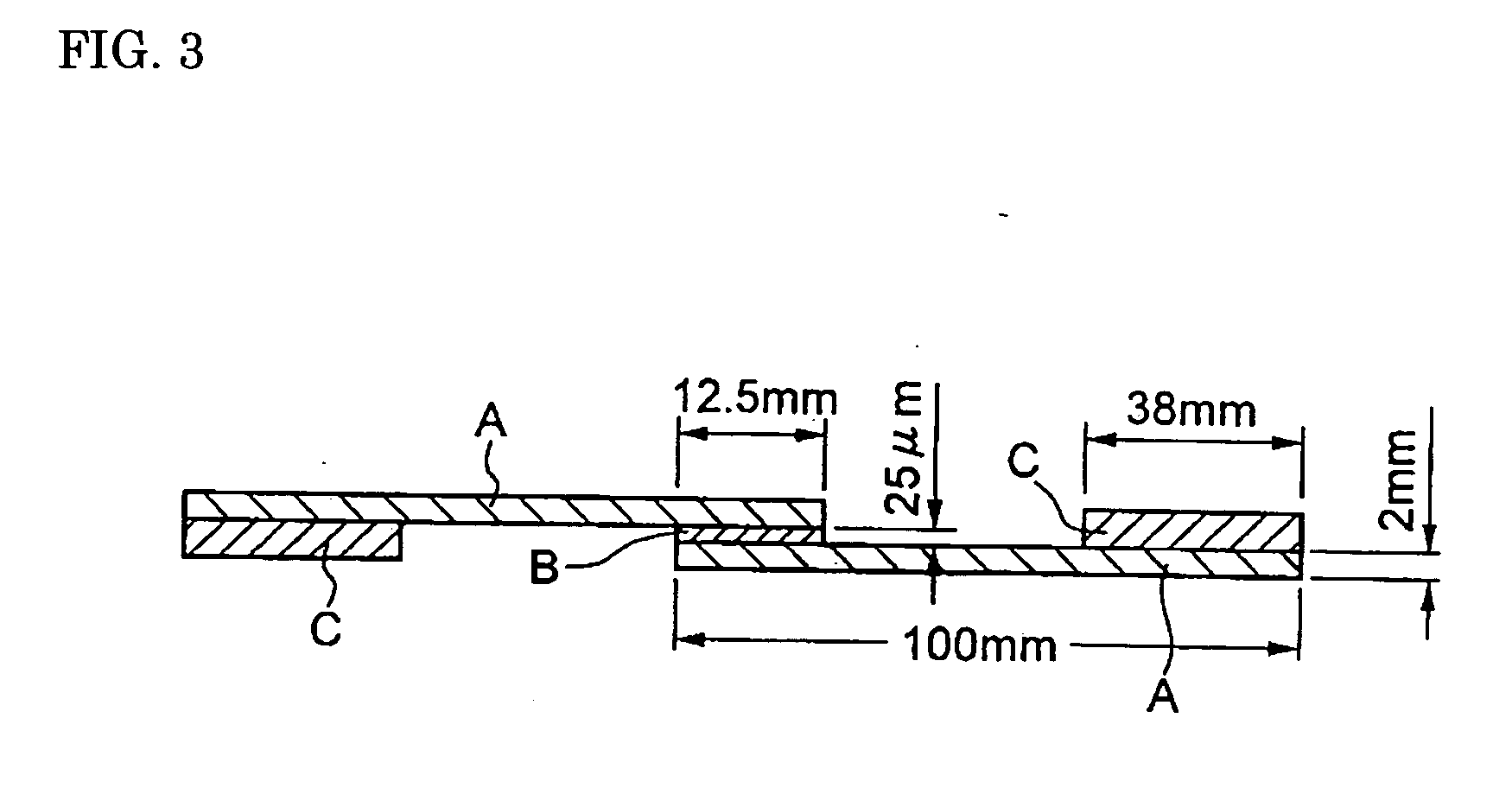Member for semiconductor device
a technology for semiconductor devices and members, applied in semiconductor devices, semiconductor/solid-state device details, electrical devices, etc., can solve the problems of insufficient bonding strength between the naturally oxidized film and the resin, the alloy or composite itself constituting the member cannot have corrosion resistance, and the bonding strength cannot be obtained. , to achieve the effect of improving the bonding strength, excellent resin bonding properties, and high resin bonding strength
- Summary
- Abstract
- Description
- Claims
- Application Information
AI Technical Summary
Benefits of technology
Problems solved by technology
Method used
Image
Examples
example
[0043] Composites having compositions shown in the Table given below were prepared to be used as base members of a member for a semiconductor device. More specifically, Cu—W or Cu—Mo composites were manufactured to have a substantially 100% concentration by using an infiltration method. An Al—SiC composite was manufactured by using a sintering method. In addition, a Si—SiC composite was manufactured by the infiltration method.
[0044] These composites are machined in the shape of plates having a dimension of 100 mm (length)×25 mm (width)×2 mm (height). The surfaces of the plates were subjected to grinding or blasting, so these composites have the values shown in the Table in a range of a surface roughness of 0.5 to 100 μm in Rmax. The samples 1 to 17 of the present invention were obtained by forming a coating layer made of a hard carbon (DLC) film having a thickness shown in the Table on the surface of each of the base members using a plasma CVD method. In addition, as comparative ex...
PUM
| Property | Measurement | Unit |
|---|---|---|
| thickness | aaaaa | aaaaa |
| surface roughness | aaaaa | aaaaa |
| depth | aaaaa | aaaaa |
Abstract
Description
Claims
Application Information
 Login to View More
Login to View More - R&D
- Intellectual Property
- Life Sciences
- Materials
- Tech Scout
- Unparalleled Data Quality
- Higher Quality Content
- 60% Fewer Hallucinations
Browse by: Latest US Patents, China's latest patents, Technical Efficacy Thesaurus, Application Domain, Technology Topic, Popular Technical Reports.
© 2025 PatSnap. All rights reserved.Legal|Privacy policy|Modern Slavery Act Transparency Statement|Sitemap|About US| Contact US: help@patsnap.com



